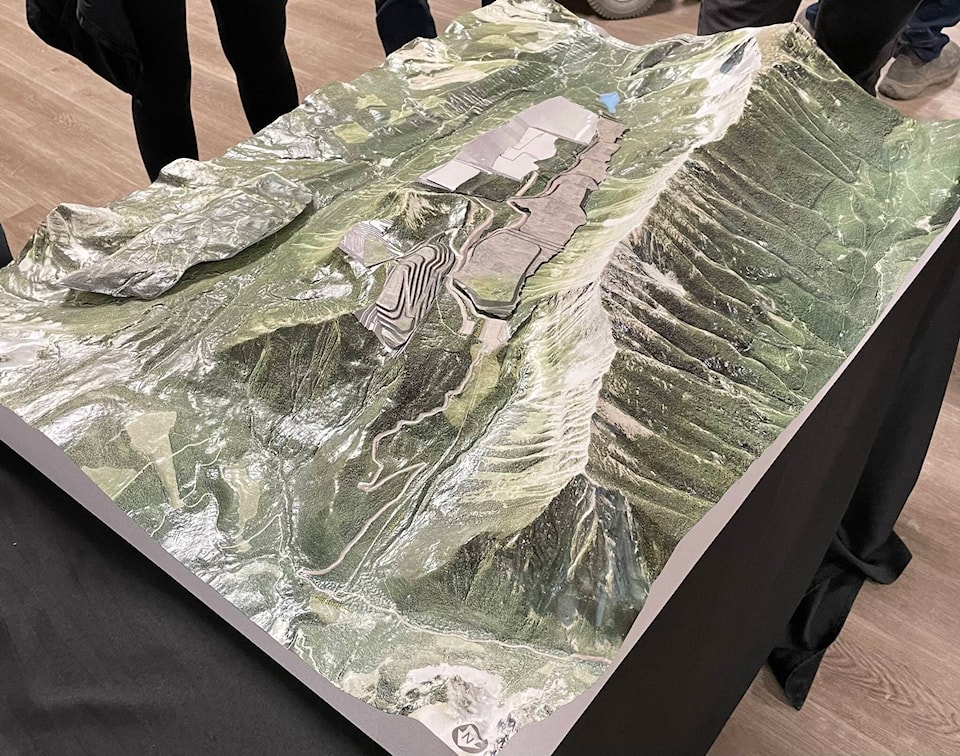Environmental groups are voicing opposition to a proposed coal mine north of Sparwood.
Sparwood and District Fish and Wildlife Association and Wildsight have concerns about the Crown Mountain Coking Coal Project, particularly regarding wildlife connectivity and habitat loss, and water blockage and contamination. Representatives from both groups were in attendance at mine-related government-hosted public consultation sessions in Cranbrook and Sparwood on Feb. 13 and 14.
Crown Mountain mine, to be located mid-way between Sparwood and Elkford in the Alexander Valley, recently passed a new stage of government approval with the Impact Assessment Agency of Canada. Following this, the government and NWP Coal Canada Ltd. launched a month-long period of public consultation to give stakeholders and interested parties the chance to comment on the proposed project. These public meetings are taking place throughout the month of February.
Wildsight conservation coordinator Randal Macnair said the Alexander Valley is part of a critical wildlife transportation corridor that wide-ranging carnivores like grizzly bears and wolverines use to access national parks in the north and the U.S in the south. He said that placing a mine in this area could have far-reaching consequences.
“We’re smack dab in the middle of one of the most important wildlife connectivity corridors in the world,” he explained “… The genetic health of animals, the biodiversity that’s so critical, it gets blocked by things like mines.”
Sparwood Fish and Wildlife member Matt Huryn echoed similar sentiments. He described the valley as being one of few undeveloped natural spaces left for elk to use as a wintering range, that if destroyed, would make herds more vulnerable to starvation in the colder months.
Huryn explained that while he’s not completely against mines, he doesn’t think the valley needs any more of them either.
“I’m not anti-mining. Our club has a strong relationship with Teck Coal. It’s about making a statement that enough is enough. There isn’t anymore juice to squeeze,” he said.
Both men expressed concern over the impact the mine could have on local water sources, Huryn with selenium runoff into adjacent Grave Creek and Macnair with waste rock dumping into Alexander Creek.
Huryn said that mining in Alexander Valley would likely further elevate local selenium levels that have already passed provincially acceptable levels, particularly since Grave Creek feeds into the Elk River.
Macnair said he’s concerned about plans to dump waste rock into Alexander Creek, which is currently a habitat for the endangered westslope cuthroat trout.
“The mine would just obliterate the creek,” he said.
Yaq’it?a·knuqi ‘it (Tobacco Plains Indian Band) chief Heidi Gravelle has voiced a complaint about a coal shipping area being proposed for the Grave Creek area. In January, she said the Ktunaxa First Nation would not agree to industrial activity on Grave Prairie, which is a culturally and archaeologically significant area to the local First Nations people.
NWP Coal has said it plans to lessen environmental impact through source control, a method that involves keeping as much selenium in the rock as possible, and active treatment, which treats contaminants before water is released outside the mine.
Macnair said he has doubts about this process and its ability to prevent selenium from leaching into the environment.
“We’ve had conversations with mining engineers about the claims that NWP is making about the effectiveness of this method and there’s a high degree of skepticism within the industry that it would accomplish what they claim it would accomplish,” he said.
“We’re in a valley that already has a high degree of industrialization. There’s five existing mines and adding another one, it’s death by a thousand cuts. How much more can this valley take?” he queried.
